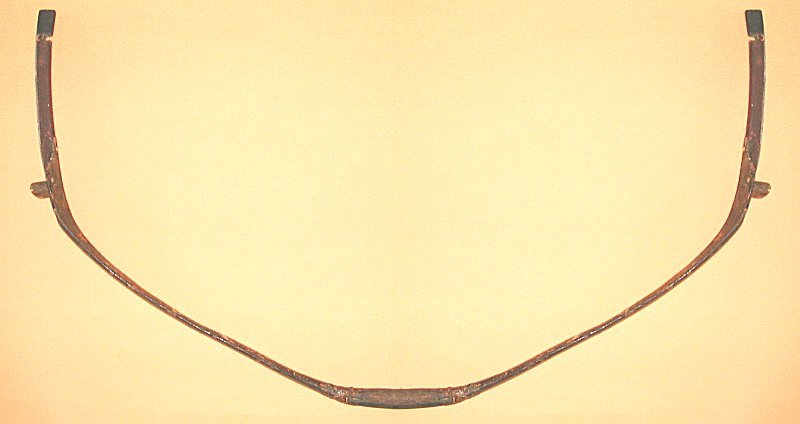Asian Traditional Archery Research Network (ATARN)
A1, Cloudridge,
30, Plunkett’s Road,
The Peak, Hong Kong.
Tel: (852) 2895-4488
Fax: (852) 2808-2887
email: srselby@atarn.org
October 2000
Dear All,
With a sinking feeling, I
faced writing the newsletter once again with nothing to offer other than
something about Chinese bows or archery. That's a problem I face each month, me
being the webmaster and at the same time knowing little about archery and
equipment outside China. Then at the last minute I was saved by a delegate I met at a conference held here in Hong Kong.
Hasman Shah Bin Abdullah is a professor at the
Universiti Teknologi MARA in Selangor, Malaysia. Over dinner, we discussed
traditional archery and he came up with the following story.
"When I was a kid in Segamet, Malaysia in
1968-69, there was an old Tamil man who worked with the Public Works Department. We
just called him 'uncle' in Tamil - I don't know what his real name was. Anyway,
he used to make bows and shoot pellets from them. I and the other kids used to
help him. We would go into the jungle to collect bamboo, and then he would cut
the bamboo and soak it for some time in a mixture of three kinds of oil.
I can't remember what oils they were, but I think one was something we called 'salajeeth'.
 |
"After soaking the bamboo, he would
put it in a container and bury it under the ground for a few weeks. When he dug
it up again, it was ready for the nocks to be cut. Then we would go into the
jungle again to search for the bark of a certain type of tree. When the bark was
dried out and beaten, it made an excellent bowstring. The strings would be
formed in a parallel pair with a basket woven in the middle to take the
pebble. The bows were too strong for us to brace: Uncle would brace them after
taking a few deep breaths to prepare himself for the effort.
"Uncle used to make pellets out of baked
clay. We children were not allowed to shoot with these pellet bows. "If you
don't know how to shoot properly with these bows, the pellets will shatter your
knuckles," Uncle used to warn us. We used to have flying foxes (a type of
fruit bat) in Segamet and Uncle could take one down with his pebble bows."
Left: A White Karen from Northern Siam (Thailand)
shooting with a stonebow. See
picture archive. |
I took off a Saturday from a business
meeting in Geneva to visit the workshop of Patrice Canale in Bordeaux,
France. Patrice has been making a variety of traditional bows in modern
materials and his repertoire includes Mongol-style bows. We spent and afternoon
examining a couple of old, broken Chinese bows I had taken with me we shall try to
see whether he can reproduce one in modern glass fibre.
Bordeaux is a beautiful city close to outstanding
deer and boar hunting country. If you are interested in one of Patrice's Mongol
bows, you can contact him at his firm, Euro Archery. (euro.archery@wanadoo.fr)
Sorry to come back to Chinese things; but some
interesting old bows have been coming to me from Gansu Province in West China
recently. Gansu is a dry province adjacent to Tibet, and it seems that bows are
better preserved there than in Peking, partly because of the climate and partly because
many people there still know about how to look after bows. One bow I recently obtained was an old,
damaged Child's bow. The measurement from tip to tip along the limbs is
just 123.5 cm. It is exactly two-thirds the size of a standard adult's bow of the same
proportion and design, and perfectly made in the traditional way with horn and
sinew, and decorated with lacquered birch bark.

Qing Dynasty Chinese half-size child's bow (123.5 cm from tip to tip along the
limbs)
Unfortunately, the bow is quite damaged. One of the
horn tips has broken off and the wood has been squared at the break and a new
tip carved into the siyah an inch or so below it, so that the length of the siyahs now
differs by about one inch. (I have seen this sort of patch-up in many Chinese and
Mongolian bows.) In the illustration above, I have used the computer to restore
it to its original appearance. Based on a standard brace height, a Chinese bow
has a string length between nocks approximately 0.855 of its length measured
along the limbs. Therefore, the string length of the child's bow was
approximately 105.5 cm.

